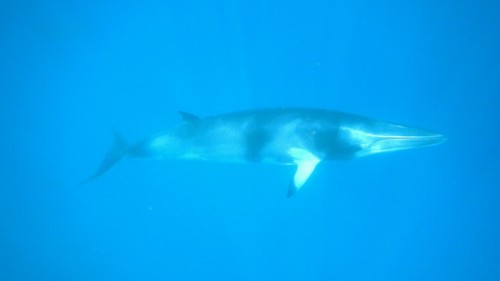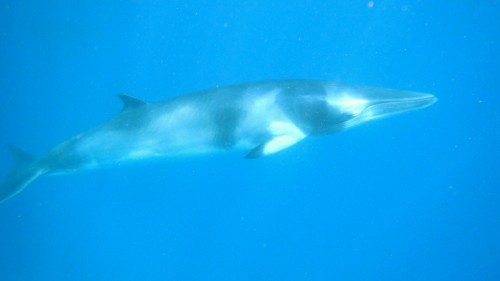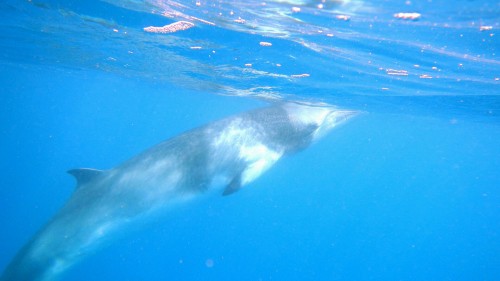Quicksilver Group News
June 16th, 2015Minke Swims with Silversonic Passengers
A curious dwarf minke whale delighted and amazed snorkellers travelling with Port Douglas dive and snorkel vessel Silversonic on Saturday.
The minke believed to be a small adult swam around the vessel and surfaced a few times as if saying “hello and welcome to my world” to everyone while the vessel was moored at Castle Rock at Agincourt Reef.
Silversonic Skipper Shane “Sharky” Down said “The minke was about 4-6 metres in length. As our passengers held onto the rope to observe the Minke it came within 2 metres of them and stayed for about 15 minutes before swimming away. It does not matter how often you have seen them it is still an amazing experience. If fact, I think the crew get more excited than the passengers as they know just how special it is.”
Silversonic and Poseidon have 2 of only 3 permits in this region to be issued by Great Barrier Reef Marine Park Authority to all our passengers to swim with the minke whales. About 300 people each season have the privilege of swimming with a minke whale each year so it is very rare and beautiful.
Russell Hore, Quicksilver Marine Biologist said “Interactions have become more frequent in the past few years and is one of those once in a life time experiences. About 300 people each season have the privilege. Swimming with Minke Whales has been voted Queensland’s top secret and Australia’s third best kept secret in a recent travel poll.
Silversonic and the Quicksilver Group support minke whale research by contributing data and sightings information to the Minke Whale Project at James Cook University in Townsville. This partnership between the tourism industry, JCU researchers and GBRMPA has been hailed as a World’s Best Practice approach to the sustainable management of swimming-with-whales tourism by several international wildlife conservation organisations. 90% of minke whale sightings are during June and July.
The dwarf minke whale (Balaenoptera acutorostrata subspecies) occurs only in the southern hemisphere, and the Great Barrier Reef provides habitat for their only known reliable aggregation in the world. Dwarf minke whales grow to a maximum of around 8m, with adults weighing around 5-6 tonnes. They have a characteristic white blaze on their flippers and shoulders, contrasting with their dark grey top color. They have two blowholes, like all baleen whales.
The dwarf minke whale is the second smallest baleen whale, and its population size and migration are still largely unknown. Minke Whale Project scientists on the Great Barrier Reef however have been able to learn a great deal about this group of dwarf minkes in recent years with help from tourism operators and visitors to the Reef, and many identified individual whales are returning to the same Reef sites each year.
The bottom line is – don’t swim to the whale, let the whale swim to you!


